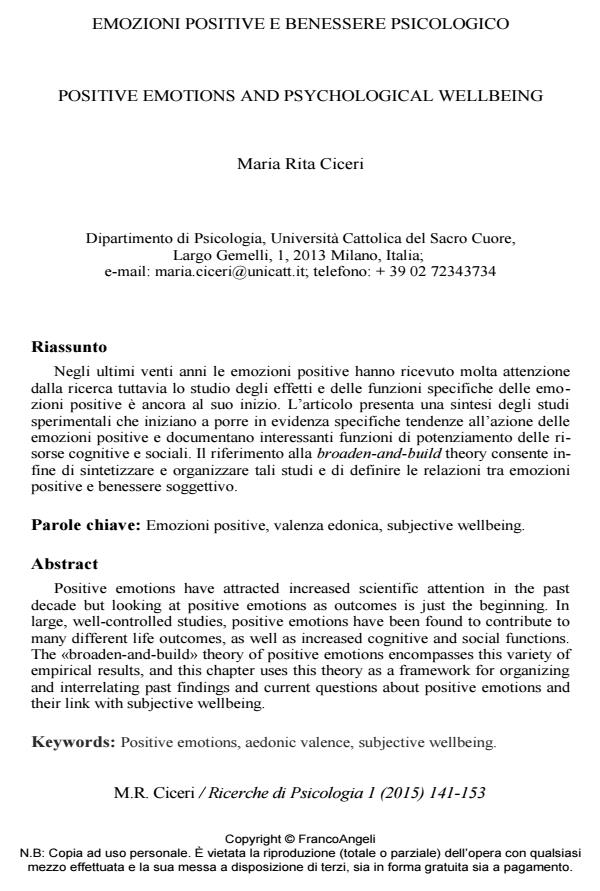Emozioni positive e benessere psicologico
Titolo Rivista RICERCHE DI PSICOLOGIA
Autori/Curatori Maria Rita Ciceri
Anno di pubblicazione 2015 Fascicolo 2015/1
Lingua Italiano Numero pagine 13 P. 141-153 Dimensione file 209 KB
DOI 10.3280/RIP2015-001008
Il DOI è il codice a barre della proprietà intellettuale: per saperne di più
clicca qui
Qui sotto puoi vedere in anteprima la prima pagina di questo articolo.
Se questo articolo ti interessa, lo puoi acquistare (e scaricare in formato pdf) seguendo le facili indicazioni per acquistare il download credit. Acquista Download Credits per scaricare questo Articolo in formato PDF

FrancoAngeli è membro della Publishers International Linking Association, Inc (PILA)associazione indipendente e non profit per facilitare (attraverso i servizi tecnologici implementati da CrossRef.org) l’accesso degli studiosi ai contenuti digitali nelle pubblicazioni professionali e scientifiche
Negli ultimi venti anni le emozioni positive hanno ricevuto molta attenzione dalla ricerca tuttavia lo studio degli effetti e delle funzioni specifiche delle emozioni positive e ancora al suo inizio. L’articolo presenta una sintesi degli studi sperimentali che iniziano a porre in evidenza specifiche tendenze all’azione delle emozioni positive e documentano interessanti funzioni di potenziamento delle risorse cognitive e sociali. Il riferimento alla broaden-and-build theory consente infine di sintetizzare e organizzare tali studi e di definire le relazioni tra emozioni positive e benessere soggettivo.
Parole chiave:Emozioni positive, valenza edonica, subjective wellbeing.
- Integrating green strategy and green human resource practices to trigger individual and organizational green performance: the role of environmentally-specific servant leadership Trong Tuan Luu, in Journal of Sustainable Tourism /2020 pp.1193
DOI: 10.1080/09669582.2020.1729165
Maria Rita Ciceri, Emozioni positive e benessere psicologico in "RICERCHE DI PSICOLOGIA " 1/2015, pp 141-153, DOI: 10.3280/RIP2015-001008